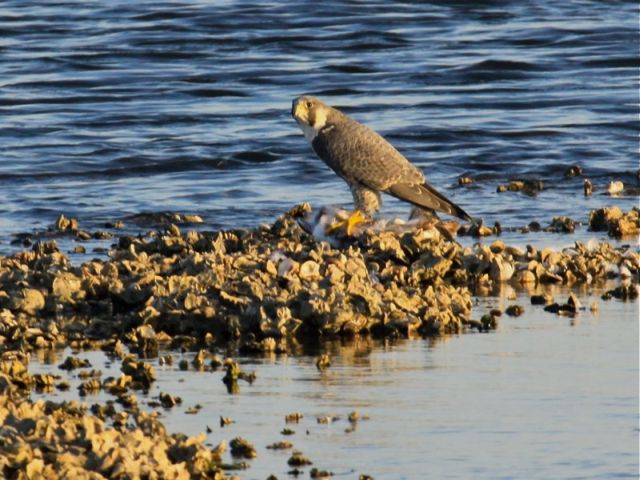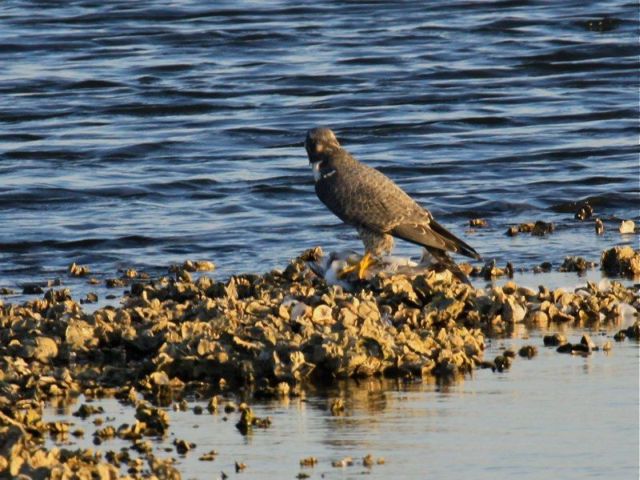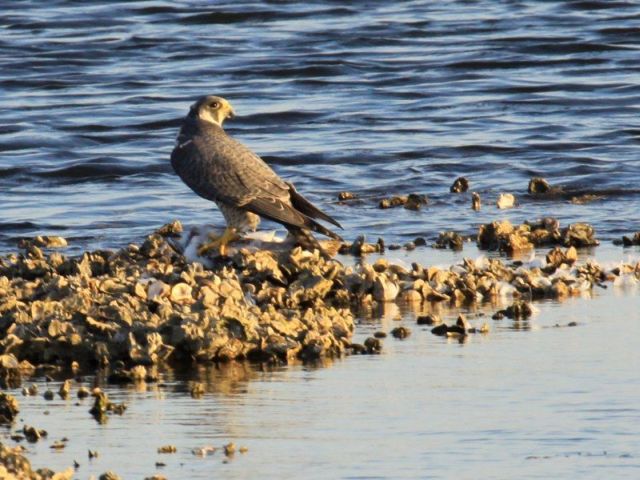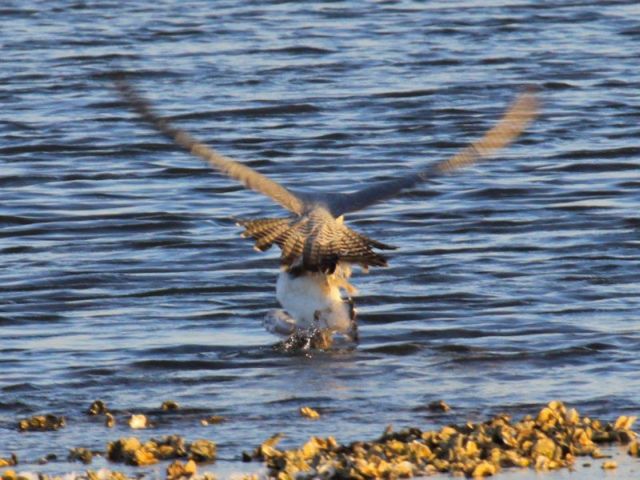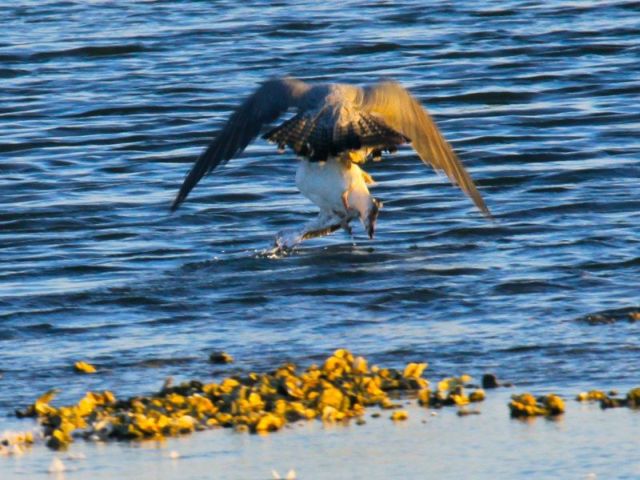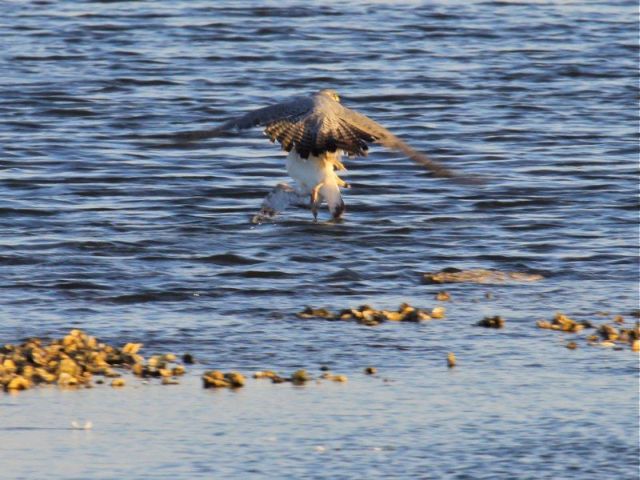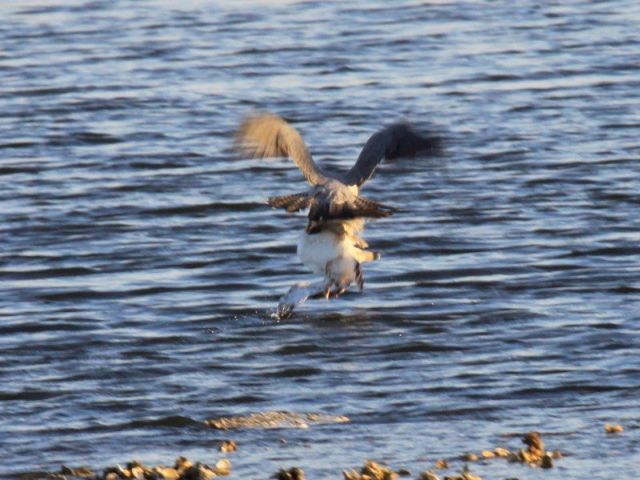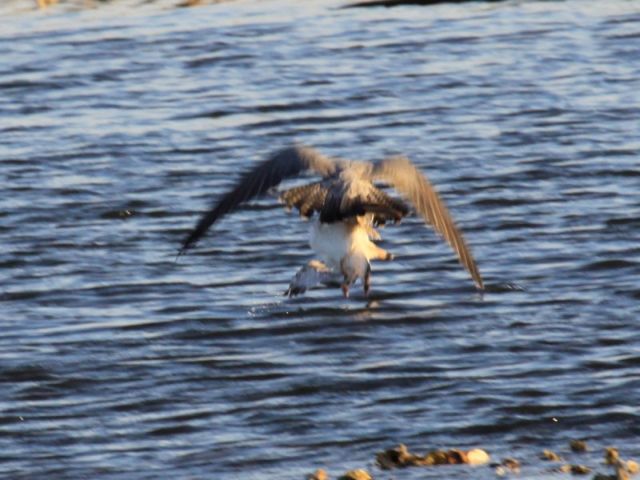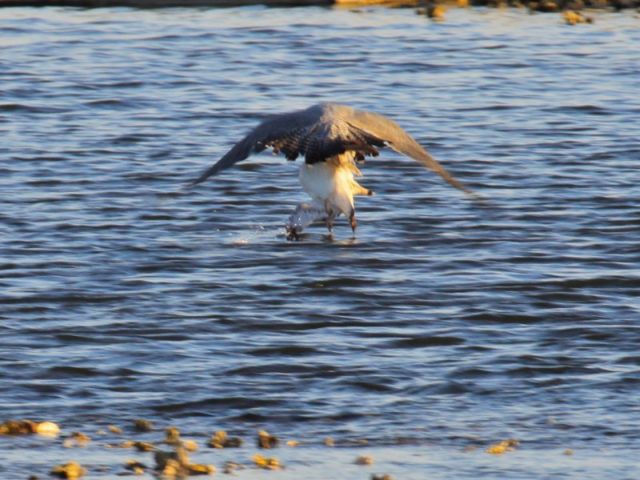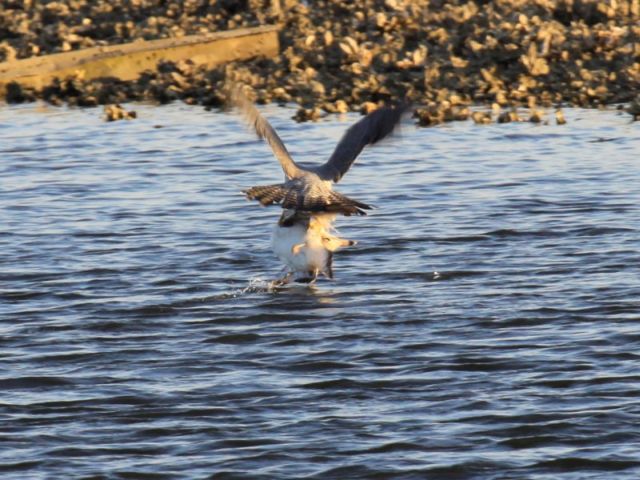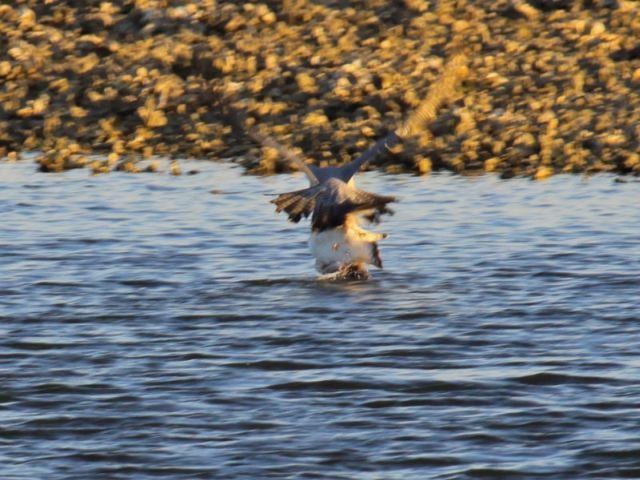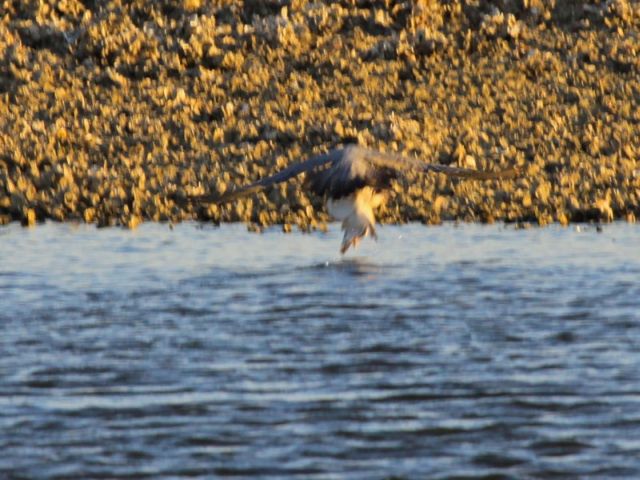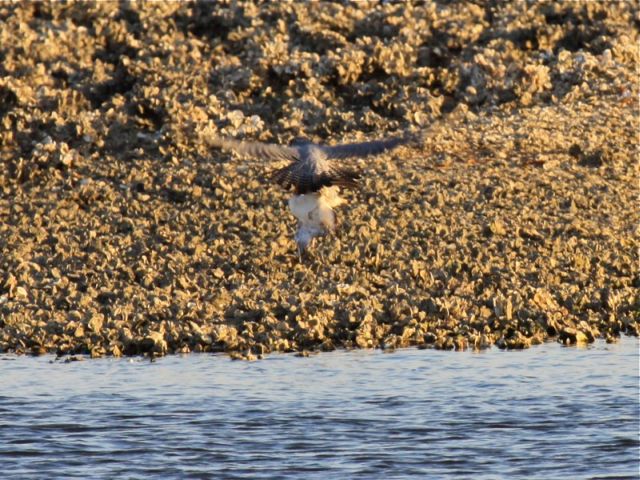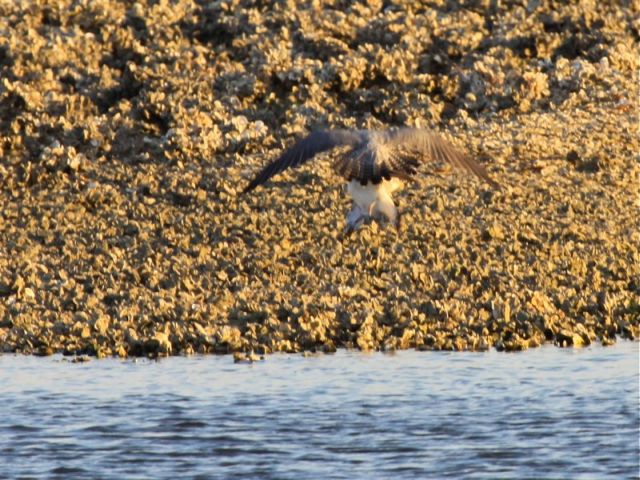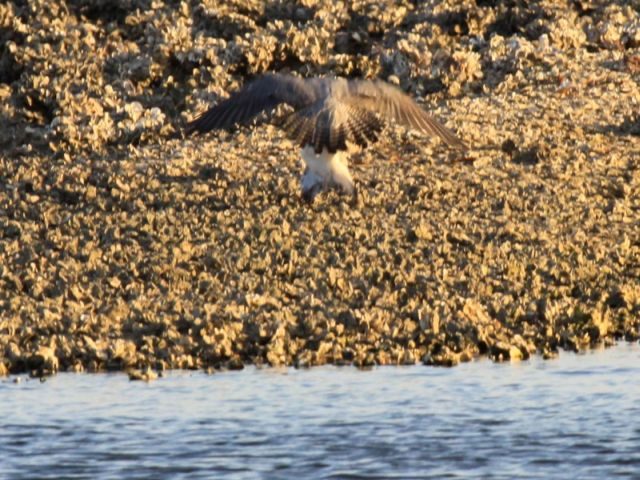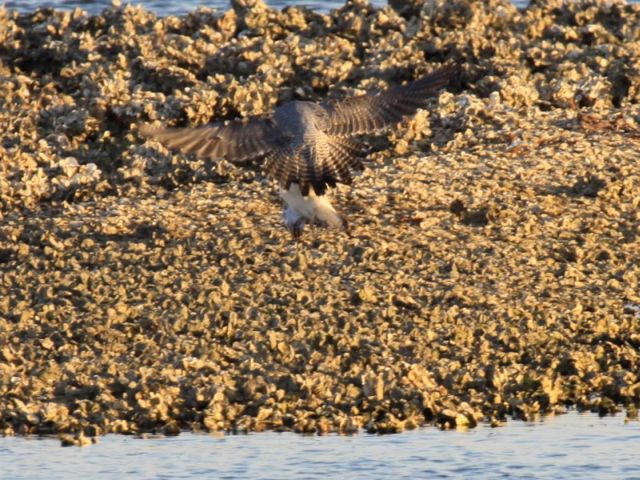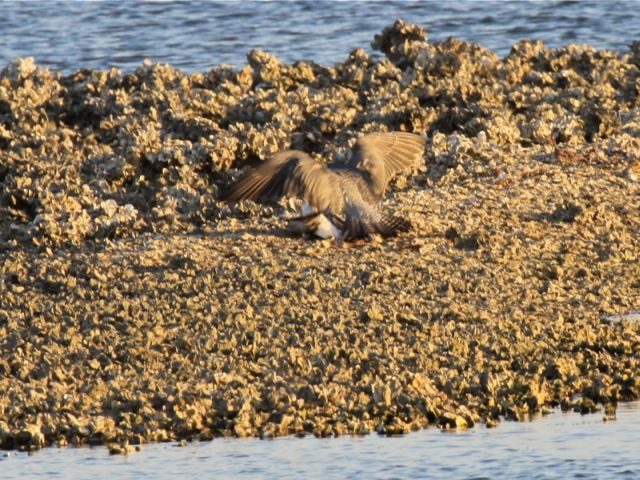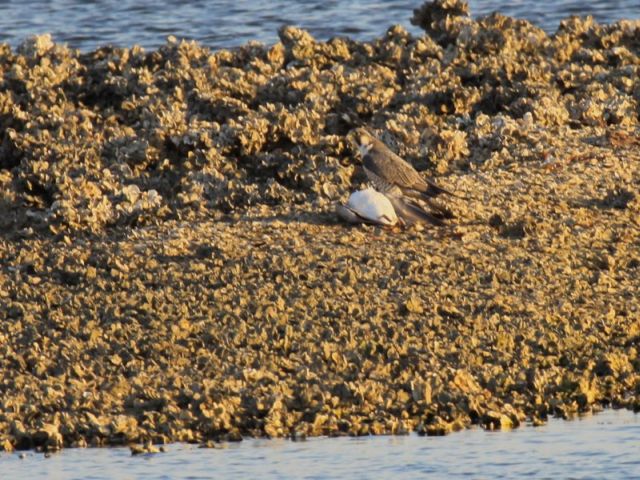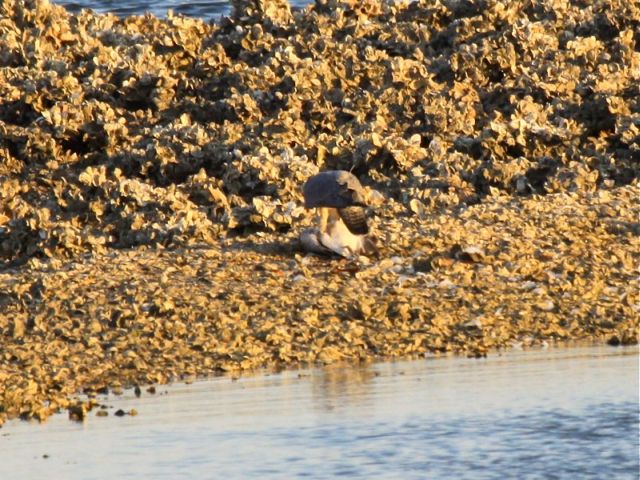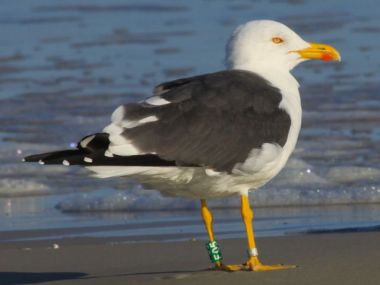 Pictured here is another Life Bird I saw in Florida last month – a lesser black-backed gull. He is in fact my exact Life Bird because I remember his green band: F05.
Pictured here is another Life Bird I saw in Florida last month – a lesser black-backed gull. He is in fact my exact Life Bird because I remember his green band: F05.
Lesser black-backed gulls breed in Iceland, Greenland, and Western Europe and winter on both sides of the Atlantic as far as Africa and the Gulf of Mexico. They are basically coastal birds though a few wander down the St. Lawrence River to Lake Erie each winter.
This particular gull is different, and it’s why he has a green band. He winters on the Florida coast where we expect him to be, but he doesn’t go back to Europe to breed. He’s only the second lesser black-backed gull ever to nest in the United States. Even more amazing is his choice of a mate. She’s a herring gull and their babies are hybrids.
When I read F05’s story I’ll admit the scientific side of my mind shut off and romance took over.
Can a young European find love in an American mixed marriage? Apparently so.
Though this next bit is totally fictional, imagine if you will….
Born in Iceland our young hero joins his cohorts as winter approaches, leaving for points south and west. He ends up on the coast of Florida and for three years he spends his winters lounging and having a good time. As he approaches his fourth birthday he matures and starts to think about finding a mate.
One day at the Volusia County dump he meets her. She looks a little different – much paler – but she says he’s just her type: tall, dark and handsome.
“Where are you from?” he asks.
“Appledore,” she replies.
“Wow,” he says, “It sounds just like a place in Harry Potter. I’d love to see it.”
They spend more time together and before you know it they fall in love. He notices her courtship customs are similar to his but she doesn’t throw her head back as far during the “long call.” There are other little differences but it doesn’t matter. They’re in love.
He follows her home to Appledore Island, Maine. That was three years ago. They’ve nested successfully and raised three kids since 2007. Though humans watch them all the time and band the babies, it’s a good life.
“No complaints,” he says. “She’s the best.”
….No more fiction!…
For their real – and scientific – story and for pictures of F05, his mate and offspring, click here.
(photo by Chuck Tague, who also blogged about this gull)
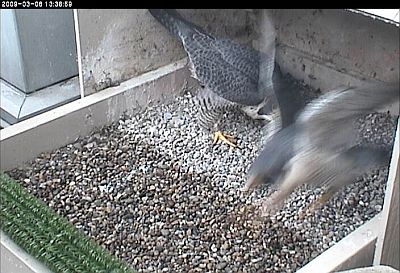 This afternoon I found this photo in the webcam archives from the University of Pittsburgh peregrine nest. I love the action in this shot!
This afternoon I found this photo in the webcam archives from the University of Pittsburgh peregrine nest. I love the action in this shot! Pictured here is another Life Bird I saw in Florida last month – a
Pictured here is another Life Bird I saw in Florida last month – a 


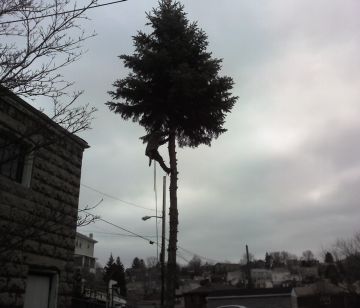 On Saturday I heard the sound of buzz saws. I never like that sound. It means a tree is coming down.
On Saturday I heard the sound of buzz saws. I never like that sound. It means a tree is coming down.